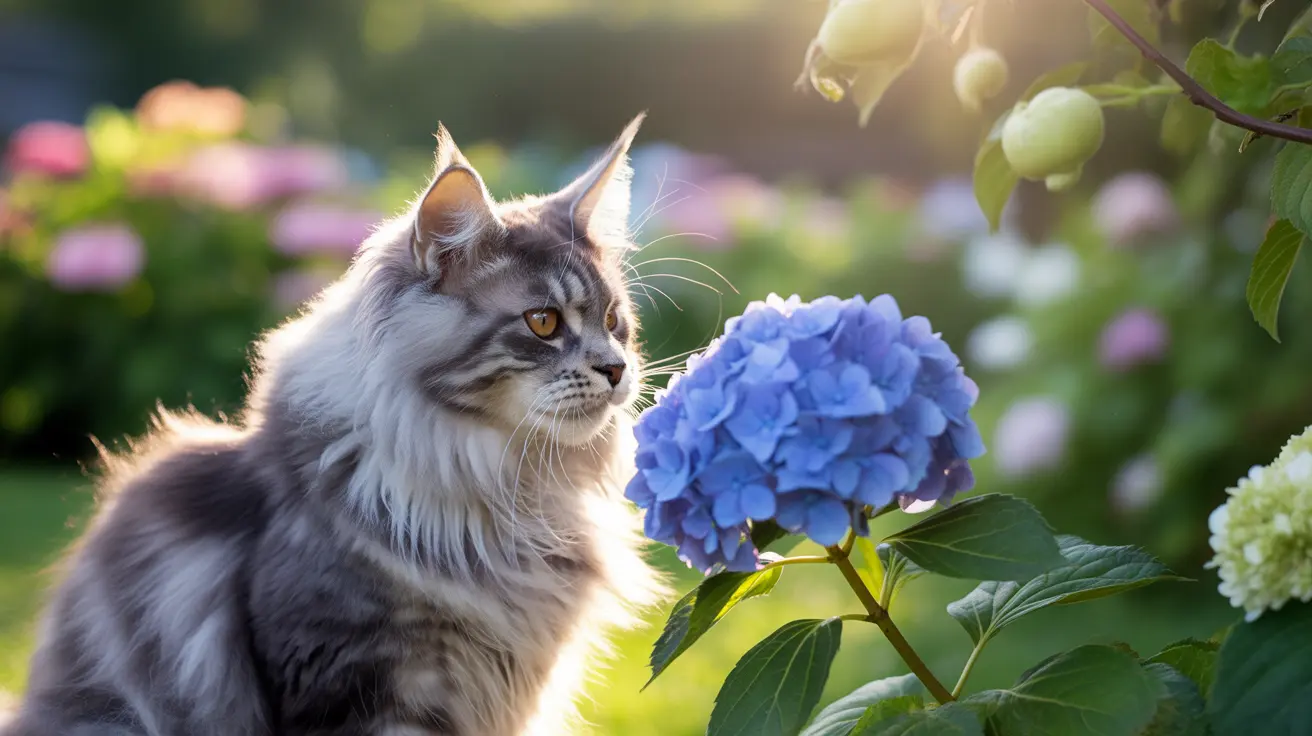Introduction
Are hydrangeas poisonous to cats? The simple answer is yes. These beautiful ornamental plants, beloved for their vibrant blooms, contain toxic compounds that can pose a serious health risk to our feline companions. Understanding the dangers of hydrangeas and recognizing the signs of poisoning can help cat owners protect their pets and respond appropriately if exposure occurs.
While most cases of hydrangea poisoning in cats result in mild to moderate symptoms, the presence of cyanogenic glycosides in these plants makes them a genuine concern for pet safety. Let's explore everything you need to know about hydrangea toxicity in cats, from identification of symptoms to prevention and treatment options.
Understanding Hydrangea Toxicity in Cats
The primary danger of hydrangeas comes from cyanogenic glycosides, particularly amygdalin, which releases cyanide when digested. All parts of the hydrangea plant contain these toxic compounds, with the highest concentrations found in the flowers and leaves. Even small amounts can trigger symptoms in cats due to their relatively small body size.
When a cat ingests hydrangea plant material, their digestive system breaks down these compounds, potentially leading to various levels of toxicity depending on the amount consumed and the individual cat's sensitivity.
Signs and Symptoms of Hydrangea Poisoning
Most cats who encounter hydrangeas will show symptoms within a few hours of ingestion. Common signs include:
- Vomiting
- Diarrhea
- Lethargy
- Decreased appetite
- Excessive drooling
- Depression
In more severe cases, cats may experience:
- Difficulty breathing
- Weakness or collapse
- Blue-tinged gums
- Muscle tremors
- Seizures
Emergency Response and Treatment
If you suspect your cat has ingested hydrangea, immediate action is crucial. Remove any remaining plant material from your cat's reach and contact your veterinarian or emergency animal hospital right away. Don't wait for symptoms to appear, as early intervention can prevent more serious complications.
Treatment typically involves supportive care, including:
- Intravenous fluid therapy
- Anti-nausea medication
- Activated charcoal administration
- Monitoring of vital signs
- Oxygen therapy in severe cases
Prevention Strategies
The best way to protect your cat from hydrangea poisoning is through prevention. Consider these essential safety measures:
- Remove hydrangeas from your indoor and outdoor spaces where cats have access
- Create cat-free garden zones using physical barriers
- Choose pet-safe alternatives for landscaping and decoration
- Keep cut flowers out of reach or opt for cat-safe varieties
- Monitor your cat's outdoor activities
Frequently Asked Questions
Are hydrangeas poisonous to cats and which parts of the plant are most toxic?
Yes, hydrangeas are poisonous to cats. All parts of the plant contain toxic compounds called cyanogenic glycosides, with the highest concentrations found in the flowers and leaves.
What symptoms should I watch for if my cat eats hydrangea?
Watch for vomiting, diarrhea, lethargy, decreased appetite, excessive drooling, and depression. More severe cases may show difficulty breathing, weakness, blue-tinged gums, or collapse.
How serious is hydrangea poisoning in cats and when should I seek emergency veterinary care?
While most cases are mild to moderate, seek immediate veterinary care if you witness ingestion or observe severe symptoms like repeated vomiting, difficulty breathing, collapse, or blue-tinged gums.
What should I do immediately if my cat ingests hydrangea leaves or flowers?
Remove any remaining plant material from your cat's reach, collect a sample for identification, and contact your veterinarian or pet poison helpline immediately. Don't wait for symptoms to develop.
How can I prevent my cat from being poisoned by hydrangeas in my home or garden?
Remove hydrangeas from areas accessible to cats, create physical barriers in gardens, choose pet-safe alternatives for landscaping, and keep cut flowers out of reach. Always supervise outdoor activities.
Conclusion
While hydrangeas add beauty to any garden or home, their toxicity to cats makes them a serious concern for pet owners. By understanding the risks, recognizing symptoms, and taking appropriate preventive measures, you can protect your feline companion from hydrangea poisoning. When in doubt, always err on the side of caution and consult with your veterinarian about creating a pet-safe environment.






